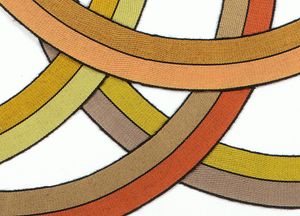When you visit, volunteer or work at the Museum of the Iron Age in Andover, one of the things that strikes you is the amazing amount of Iron Age objects on display which are in a remarkable condition. Many of the objects were found at Danebury Hillfort, close to Andover and also from nearby locations in Hampshire. On closer look, you can gauge a sense of how sophisticated and cultured the Iron Age society really was.
One of the really intriguing objects in our collection is the Hampshire Mirror. Fragments of this mirror were found by Mr David Walsh, whilst metal detecting just a few kilometres south of Silchester in North Hampshire.

An investigation of the site by Professor Michael Fulford showed that the mirror was part of a burial where the cremated remains of an Iron Age woman and infant were found. She presumably belonged to the Atrebatic Aristocracy, who ruled from the tribal capital of Calleva (now named Silchester). Silchester was one of the few Roman towns that was continuously occupied from the Iron Age. People of the same tribe name also lived at the Iron Age Hillfort of Danebury near Andover. By the time the Romans invaded Britain, there were over 30 tribes here.
As you can see from our photograph (below) of the mirror on display at the museum, Celtic mirrors were usually highly decorated and considered important examples of Iron Age art, created from approximately 300 B.C. to 70 A.D. The mirrors are made of bronze, iron, or a combination of both, are believed to have been the possessions of high-born women and generally found within graves. The Celts had a hierarchical society, which means there was a chieftain, nobles, druids, craftsmen and farmers. The druids acted as teachers, priests and doctors. There was no written language so we tend to know about Celts from Romans such as Tacitus and Julius Caesar, who described life in Celtic society and also from what Greeks said about their Celtic neighbours.

The craftsmen who would have made such a mirror were very important people in a tribe. They would have also made many other objects too, such as parts of a horse’s harness, jewellery, pots, ploughs, axes, tools and lots more that you can find examples of at the museum in Andover.
We look forward to welcoming you soon and hope you can also join us for our Danebury – Past and Present Footsteps exhibition from 9 June – 17 July 2022, where we are co-curating an art and object exhibition inspired by Danebury Hillfort and our Iron Age collections. Please visit our website events page for more information.




